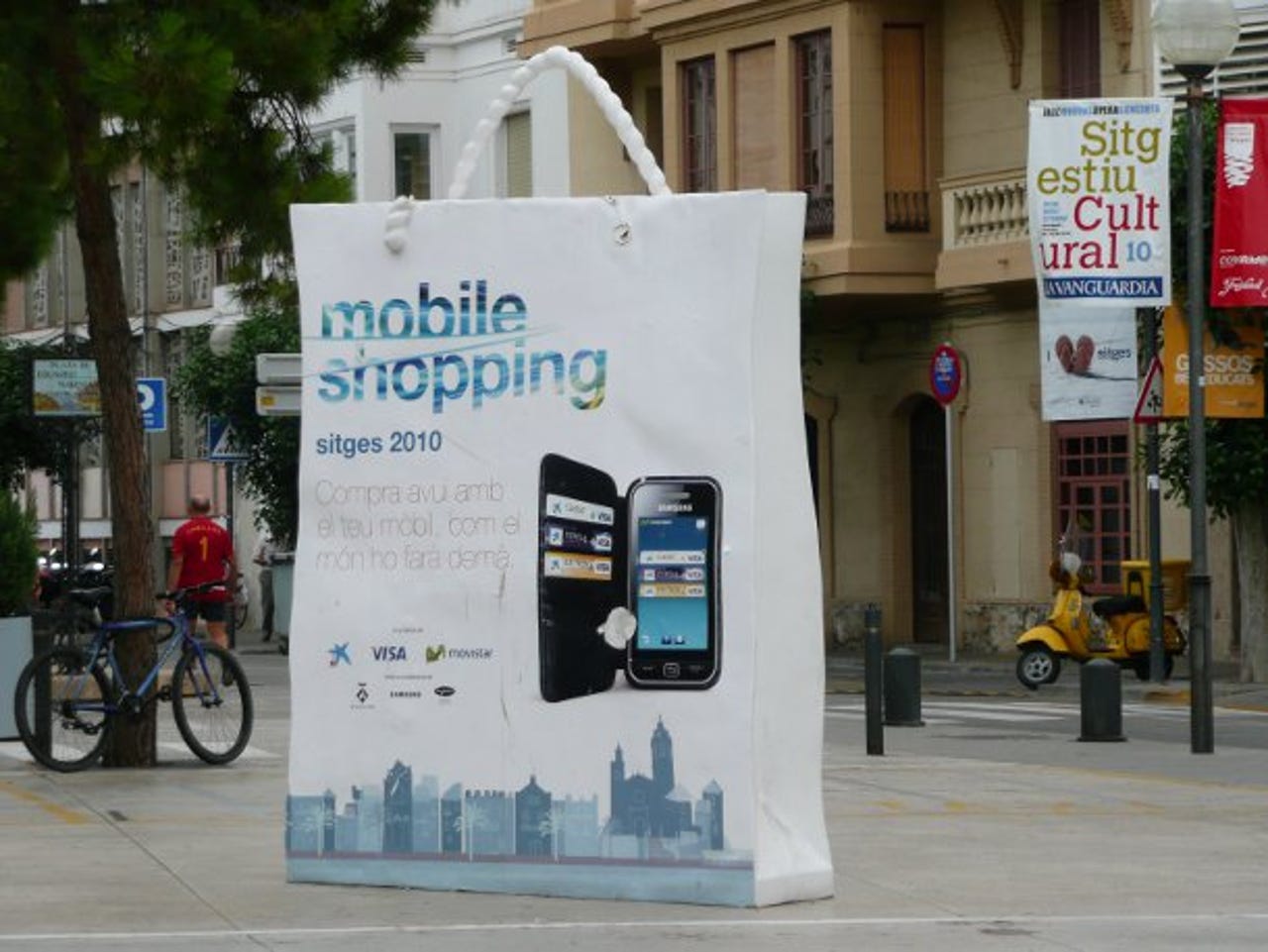Photos: Sun, sand, mobile wallets - Europe's biggest m-payments trial


Visa and Telefonica road test contactless mobile payments in Spanish resort of Sitges...
Residents of the Spanish city of Sitges, near Barcelona, are participating in Europe's largest mobile wallet trial.
Instead of handing over cash or a card at the end of a shopping trip, 1,500 locals are getting the chance to pay for their purchases by swiping their mobile phone over a contactless reader at the till.
The trial, which kicked off in May and runs until November, is a collaboration between Spanish bank La Caixa, mobile operator Movistar - owned by Telefonica - and payments company Visa.
The handset that triallists are using during the pilot is the Samsung Touch Star, pictured above.
The device contains an NFC antenna, which allows it to make contactless payments.
Unlike in a 2007 London mobile wallet pilot, also involving Visa, the handsets are not pre-loaded with cash but are linked to the trial participants' existing La Caixa bank accounts - meaning triallists are spending their own money and making the trial more commercially realistic.
The NFC handsets come preloaded with a Visa mobile wallet app - the blue icon at the top left.
The app, however, does not need to be running for a transaction to be made and the phone can also act be used to make purchases even when its battery is flat.
Once the app is opened, the triallist's virtual Visa card is shown inside the virtual wallet. The card is stored on the SIM - which acts as a secure element.
The other four slots in the wallet are empty for now but Visa envisages other types of cards - such as travelcards and store loyalty cards - being part of a mobile wallet of the future.
The app is just a prototype so functionality is limited: triallists wishing to see their transaction history will need to log into their La Caixa mobile banking account via the bank's mobile portal.
The app does have an option to suspend the phone's contactless payments functionality - by turning off the NFC antenna - to ensure a user does not make a payment accidentally.
If the user has chosen to suspend NFC, the app contains an option to 'click to pay' - which manually turns on the contactless payment functionality, as shown above.
The app also contains instructions for mobile users explaining how to make a payment with the handset.
Once a contactless transaction has been successfully processed, onscreen confirmation - including the amount paid - is displayed on the user's handset.
Contactless payments under €20 do not require triallists to key in a PIN but for all payments over €20, the triallist is required to enter their into the retailer's POS.
In certain markets, mobile wallet technology could enable the PIN to be keyed in via the user's mobile handset itself, rather than the retailer's POS, according to Visa. In the Sitges trial, however, the PIN has to be entered into the POS.
More than 500 retailers in the city are participating in the contactless mobile payments trial - including shops in this indoor food and produce market, pictured above.
Mobile Shopping signs are displayed in the windows of participating retailers, such as this pharmacy, and next to tills to indicate contactless mobile payments are accepted.
Here a shopper makes a payment with their NFC phone by placing it next to the retailer's POS...
...And a moment later the handset displays confirmation that the payment has been made.
Feedback from the trial so far shows supermarkets are the most popular locations for the Sitges triallists to use their mobile wallets, according to Visa and its trial partners.